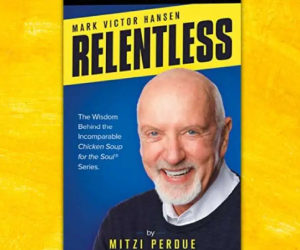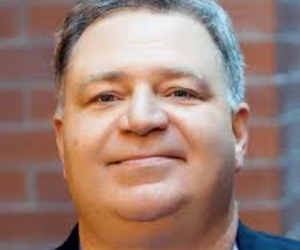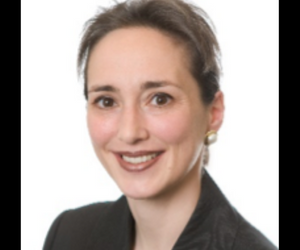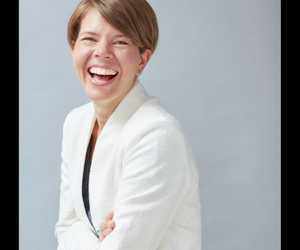The World’s Reference Library for Minerals
What is the most widely viewed museum object in the world?
The answer is, the Smithsonian’s Hope Diamond.
If you’re one of the roughly 30 million people who will be visiting the Smithsonian Institution in Washington, D.C. during the Institution’s 150th Anniversary celebration, be sure to see the Hope Diamond. It’s located on the second floor of the National Museum of Natural History.
When you see the Hope Diamond, you’re looking at one of the rarest and most precious gems on earth. If no one has prepared you for it, you’d probably expect a large, sparkling colorless stone. True, the Hope Diamond is large but the diamond itself is a glittering violet-blue. There’s a radiance to it so lovely that you can understand why kings, like Louis XIV of France and George IV of England, treasured the gem.
The Hope Diamond is just one small part of the Smithsonian’s gem and mineral collection. Since the Smithsonian’s mission is “the increase and diffusion of knowledge,” there’s more to the Smithsonian’s collection than just this astonishingly beautiful gem.
The Hope Diamond is actually a mineral, and behind the scenes at the Smithsonian is the world’s preeminent mineral collection. The collection includes samples of each of the world’s more than 4000 known minerals. Minerals often come in different forms, so there are samples of many known varieties of the individual minerals.
The World’s Reference Library for Minerals
The scale of the collection is impressive. To visualize the museum’s collection of just one of these minerals, quartz , imagine a drawer from your dresser. Then imagine that your dresser is 18 drawers high and 7 drawers wide. Each of those drawers might contain 20 to 50 different varieties of quartz.
The collection contains, to the best of our current knowledge, all the varieties of quartz from the entire world. The collection is available to scholars from throughout the world. It is, in the words of Randall Kremer, a Smithsonian spokesman, “The World’s Reference Library for Minerals.”
Scholars can borrow samples or can request minute shavings for study and experimentation.
The minerals are available at no charge, but the Smithsonian nevertheless gets something priceless in return. Each scholar or scientist who uses Smithsonian specimens is asked to share their results with the Smithsonian. In this way, the Smithsonian has become one of the world’s most outstanding repositories of information on minerals
It’s a good deal for the Smithsonian and for this country as well because it means an ever-expanding knowledge base about minerals. The implications of this are almost beyond imagination. To get a glimpse of the importance of minerals, look at a city skyline, and consider that most of the raw materials for all the buildings you see come from minerals. Whether it’s the steel in the girders, or the silicon in the glass windows, or the cement foundations, it’s minerals that make up the buildings.
Or think of an automobile. Almost everything in it, from the iron and steel and aluminum in the body, to the tungsten in the headlights or the copper in the wiring, comes from minerals. Minerals are a basic natural resource and the more we know about them, the more wisely we can use them.
The Hope Diamond may be the showiest of the minerals, but in the view of Linda Welzenbach, one of the Smithsonian’s geologists, “all minerals matter.”
Search Blogs
Latest Posts
Dancing Warriors: How Russia’s Propaganda is Impacting Professional Stages
https://foreignpress.org/journalism-resources/dancing-warriors-how-russias-propaganda-is-impacting-professional-stages Publication –foreignpress.org
Taking the Panic Out of Panic Attacks—With Technology
https://foreignpress.org/journalism-resources/taking-the-panic-out-of-panic-attackswith-technology Publication –foreignpress.org
An Evening Dedicated to Mental Health and Recovery in War-Torn Ukraine
https://foreignpress.org/journalism-resources/an-evening-dedicated-to-mental-health-and-recovery-in-war-torn-ukraine Publication –foreignpress.org
Ukrainian Kids Get a Vacation from War When a New Hampshire Community Adopts Them
https://foreignpress.org/journalism-resources/ukrainian-kids-get-a-vacation-from-war-when-a-new-hampshire-community-adopts-them Publication –foreignpress.org
Subscribe to Updates
About Author

Mitzi Perdue is the widow of the poultry magnate, Frank Perdue. She’s the author of How To Make Your Family Business Last and 52 Tips to Combat Human Trafficking. Contact her at www.MitziPerdue.com
All Articles
Learn How to Turn Adversity Into Opportunity
Learn How to Turn Adversity Into Opportunity“Use adversity as a bridge to your destiny.” Those are nice words to live by, especially if it works and your destiny turns out to be fulfilling and rewarding. People probably view Mark Victor Hansen’s destiny as a...
When it Comes to Vendors and Services, Size Matters
When it Comes to Vendors and Services, Size MattersWhen you’re evaluating outside vendors or services for your family office clients, is the size of the company you’re looking at one of your important considerations? It was a crucial screen for my late husband, Frank...
Shifting to a High-Functioning Family
Shifting to a High-Functioning FamilyYou’ve heard of a Tale of Two Cities by Dickens, right? Today’s topic is a Tale of Two Families and the person who can tell the story is Steve Legler, a family business speaker, author, and advisor. The two families he has in mind...
Are You Paying Attention to Both Parts of Succession Planning?
Are You Paying Attention to Both Parts of Succession Planning?There are two major components of family business succession, but all too often family business owners focus on only one. The result is missed opportunities and the potential for family dysfunction. The two...
Your Family’s Greatest Heirloom
Your Family’s Greatest Heirloom“There’s nothing greater you can give your family than this,” says Jamie Yuenger, founder of StoryKeep. “Provide those who come after you with the tools for personal, emotional, and spiritual success.” The way to do this, she believes,...
Want your family business to last ? Five tips for getting there.
Want your family business to last ? Five tips for getting there. View ArticleSearch ArticlesLatest ArticlesSubscribe to UpdatesAbout AuthorMitzi Perdue is the widow of the poultry magnate, Frank Perdue. She’s the author of How To Make Your Family Business Last and 52...






